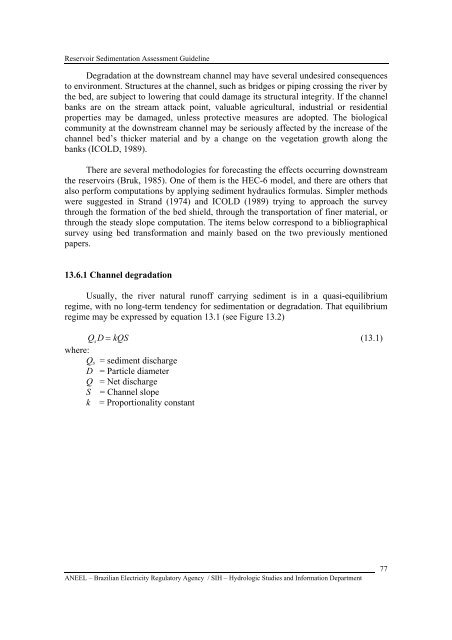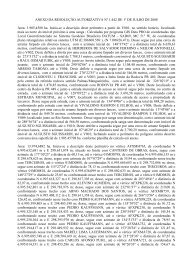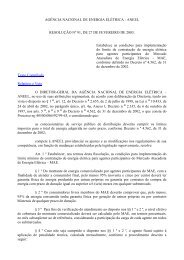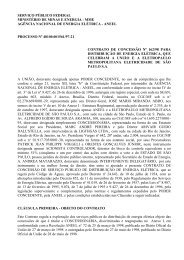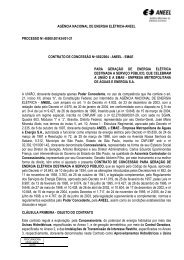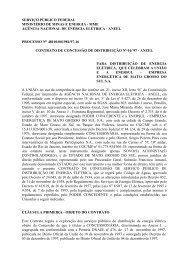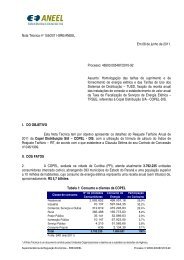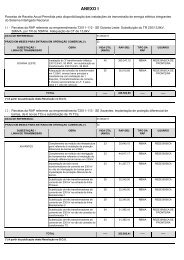RESERVOIR SEDIMENTATION ASSESSMENT GUIDELINE - Aneel
RESERVOIR SEDIMENTATION ASSESSMENT GUIDELINE - Aneel
RESERVOIR SEDIMENTATION ASSESSMENT GUIDELINE - Aneel
Create successful ePaper yourself
Turn your PDF publications into a flip-book with our unique Google optimized e-Paper software.
Reservoir Sedimentation Assessment GuidelineDegradation at the downstream channel may have several undesired consequencesto environment. Structures at the channel, such as bridges or piping crossing the river bythe bed, are subject to lowering that could damage its structural integrity. If the channelbanks are on the stream attack point, valuable agricultural, industrial or residentialproperties may be damaged, unless protective measures are adopted. The biologicalcommunity at the downstream channel may be seriously affected by the increase of thechannel bed’s thicker material and by a change on the vegetation growth along thebanks (ICOLD, 1989).There are several methodologies for forecasting the effects occurring downstreamthe reservoirs (Bruk, 1985). One of them is the HEC-6 model, and there are others thatalso perform computations by applying sediment hydraulics formulas. Simpler methodswere suggested in Strand (1974) and ICOLD (1989) trying to approach the surveythrough the formation of the bed shield, through the transportation of finer material, orthrough the steady slope computation. The items below correspond to a bibliographicalsurvey using bed transformation and mainly based on the two previously mentionedpapers.13.6.1 Channel degradationUsually, the river natural runoff carrying sediment is in a quasi-equilibriumregime, with no long-term tendency for sedimentation or degradation. That equilibriumregime may be expressed by equation 13.1 (see Figure 13.2)QDs= kQS(13.1)where:Q s = sediment dischargeD = Particle diameterQ = Net dischargeS = Channel slopek = Proportionality constantANEEL – Brazilian Electricity Regulatory Agency / SIH – Hydrologic Studies and Information Department77


